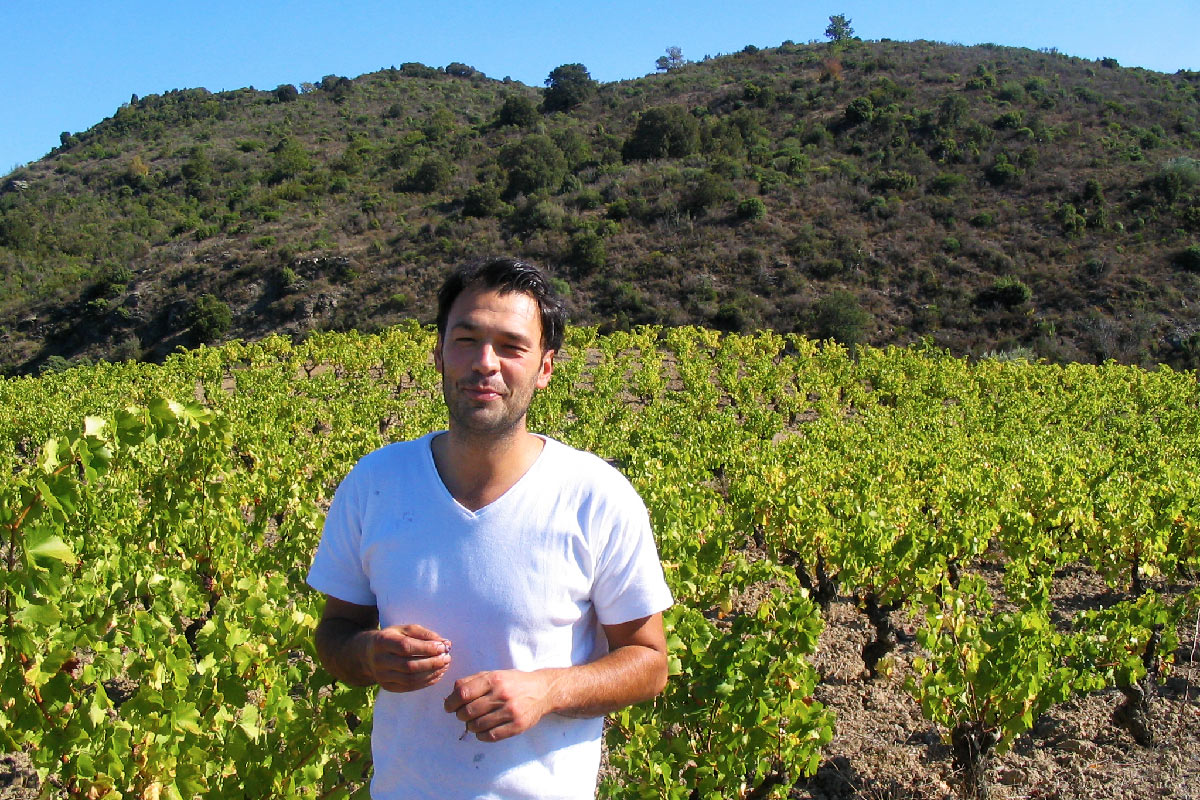Letters from Lodi
An insightful and objective look at viticulture and winemaking from the Lodi
Appellation and the growers and vintners behind these crafts. Told from the
perspective of multi-award winning wine journalist, Randy Caparoso.
Personal thoughts on the start of another new year (2024) in Lodi
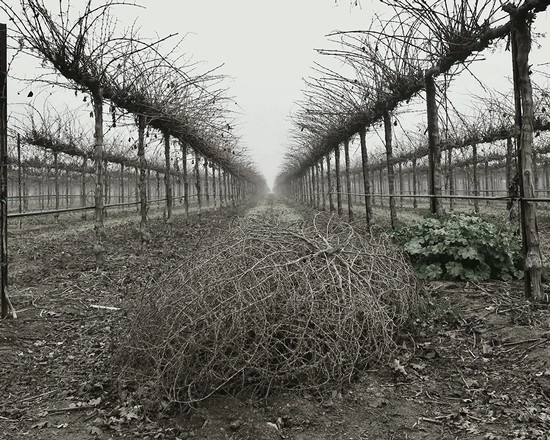
High wire trellised vines in December in Lodi's Jahant Viticultural Area.
I am not a Lodi native. I have, however, lived and worked in the appellation since 2010. I am looking forward to a fourteenth year in my adopted home.
For two weeks this past December (2023) I went back to my "roots," in the Hawaiian Islands. It was refreshing to see a lot of the old places and faces, and it also reminded me of why I now live in Lodi: Because it's real.
Like Hawaii, Lodi has its own facade; instead of mythical grass shacks and plastic hula skirts, the face of Lodi visible to most of the world is one of low priced wines made to cater to the usual expectations of mass market, supermarket products. Like Hawaii, there is a lot more to Lodi than that.
I recognized it, the first time Mark Chandler—Lodi's former mayor and the Executive Director of Lodi Winegrape Commission during its first 20 years (1991-2011)—introduced me to Lodi during a visit in 2002.
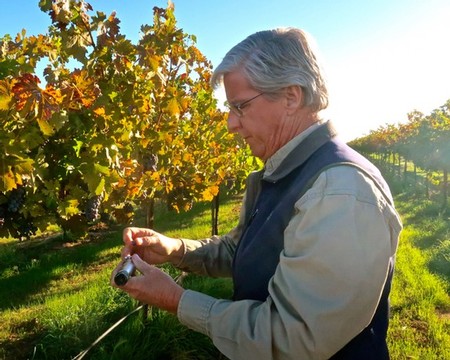
Mark Chandler checking the sugars during harvest in his Burlington Chandler Vineyard.
The first time I saw Lodi I was immediately reminded of vineyards in South-West France, a region known as Languedoc-Roussillon. For the longest time the Languedoc was known mostly for "ordinary" (or as the French say, vins ordinaire) wines, but anyone who has taken the time to explore this vast winegrowing region knows that there is much more to the Languedoc than that. It has its own share of utterly unique and fascinating vineyards, producing wines that are just as interesting—I'd say even great—as any in the world. "Great," that is, once you rearrange your perception of sensory qualities in terms of what constitutes greatness.
But for me, it wasn't so much the underdog status attached to regions such as Lodi and Languedoc-Roussillon, it was the actual physical profile of Lodi that reminded me of the latter. Both are large and wide ranging, and both blessed with a warm, consistent Mediterranean climate.
Then there are the old vines. As in Lodi, most of Languedoc is planted to younger vines, routinely replaced after 25, 30, 40 years at the most. In the course of my previous career as a sommelier/restaurateur, I started going to the Languedoc because I was also attracted to many of its older vine growths. The proof, to me, that this was an ideal wine region was that it had an extremely healthy environment, or terroir if you will, that allowed grapevines to grow to an extremely old age, if so desired. Old vines don't exist without an environment highly conducive to it.
Lodi, I immediately saw, had more old vines than anywhere else in California—the entire U.S., for that matter. Old vine viticulture is so much a part of Lodi culture, it positively exudes and celebrates it. Even if, for the longest time, the vast majority of consumers could take it or leave.
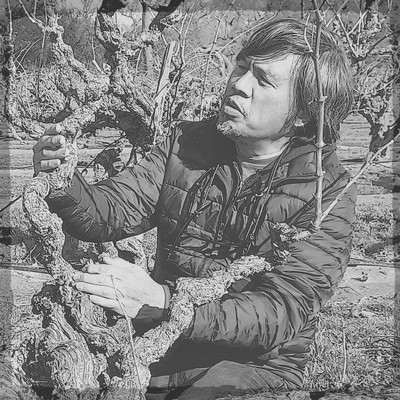
The author in his adopted home, among ancient vines in Lodi.
As a career wine professional, though, the presence of old vines told me one thing: Lodi is an ideal wine region because it has an extremely healthy environment, or terroir if you will. It was just a matter of highlighting that part, which I finally a chance to be help do once I moved over in 2010.
What was also clear to me from the first is the fact that Lodi, more than any other wine region on the West Coast, is more of winegrowing region than it is a winery region. Vineyards, not so much wineries, come first in Lodi.
When you think of it, one of the oldest sayings in the wine world is that "great wine is made in the vineyard." This doesn't mean you don't need wineries or winemakers. It just means that a talented winemaker, or a first rate production company, has a built-in advantage when the grapes they choose are sourced from great vineyards.
I love the fact that Lodi is all about vineyards. As such, all about farmers.
In wine regions, the goal of farmers is to cultivate grapevines with a balance of leaf canopy and fruit that produces healthy grapes with an ideal degree of ripeness and flavor. To achieve that, they look for their own built-in advantage: an ideal vineyard site with a combination of soil, climate and overall topography that gives them the highest percentage chance of producing healthy vines and optimal quality fruit.
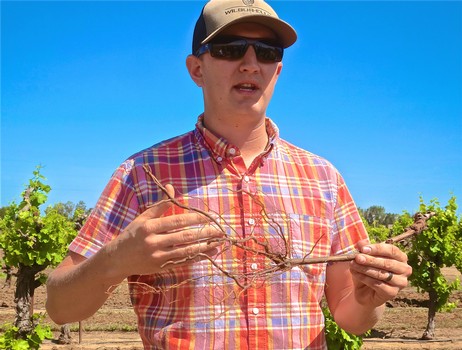
Aaron Shinn, one of many Lodi winegrowers who can trace his farming roots in the region as far back as the 1800s.
Many winegrowers still ascribe these natural factors to the blessings of Mother Nature. When you plant a vineyard in a place naturally conducive to grapevines, you are respecting Nature. She certainly has the last say when it comes to weather patterns, which have as much impact on the quality of grapes and resulting wines as site conditions.
The French use a multifaceted definition of terroir, or "sense of place," to describe the role of vineyards in the quality of wines that ends up in the bottle. Nature has her say, but vineyard management still comes down to decisions made by humans—making the right choice on where and what to plant, and making the right decisions on how to farm, from the precise point and angle in which a cane is pruned to the exact number of leaves that are pulled to prompt optimal ripeness and productivity of a grape bunch. Terroir is Nature working hand in hand with people.
That said, sensory expressions of terroir are perceptible whenever natural attributes of vineyards are allowed to transpire in a bottle. Because the vast majority of commercial wines are made to express brands, the personal styles of vintners or standardized conceptions of varietal character, there has been a recent opinion circling around the industry and even academic circles that terroir no longer matters—that it may not even exist. And if it does, that it exists primarily as a marketing tool of elitist elements of the wine industry in the interest of perpetuating mythical hierarchies of regions, individual growths or producers.
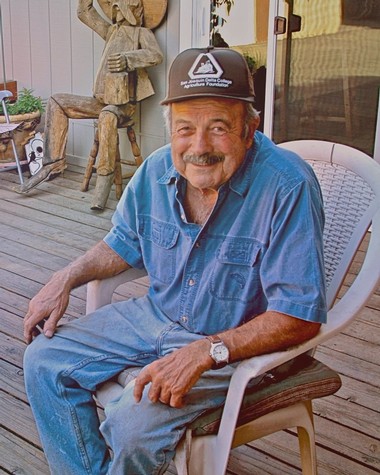
Louis Abba Jr., a third generation Lodi grower who has seen the region shift from large scale cooperative wineries to premium winemaking, including handcraft producers focused on expressions of terroir in the bottle—adding to the value of his family-owned vineyards..
Much of that is true. Terroir is neither here nor there in most commercial wines, and the wine industry has always been replete with myths. Anything having to do with sales and marketing verges on the mythical. Even when we are well aware of it, we buy many if not most products of the basis of mystique rather than fact or practicality.
Think about it: When a wine enthusiast buys a $200 wine, he or she is well aware that it is not 20 times better than a $20 wine. You may be voluntarily submitting to economic rules of scarcity, but you are also buying into a myth as much as a wine. Whatever floats your boat.
Regions such as Lodi and Languedoc-Roussillon exist, on the other hand, because of one simple fact: These are good places to grow wine grapes. The terroir, at least on a physical level, is favorable. The actual taste of terroir may not be a factor in most wines coming out of these regions, but there are enough handcrafted bottlings—produced to express attributes of vineyards rather than brands or grape profiles—to know that terroir, as distinctive sensory attributes, exists as much in a Lodi or Languedoc wine as it does in wines from, say, Bordeaux, Burgundy, Napa Valley or Willamette Valley.
Slowly but surely, Lodi is developing a generalized reputation for soft, fragrant, fresh fruit driven yet effortlessly balanced styles of wine, very much an expression of the appellation's Mediterranean climate and fecund soils. Internationally distributed homegrown Lodi brands such as Michael David Winery, Klinker Brick Winery and LangeTwins Family Winery & Vineyards have made these sensory profiles their stock and trade.
Maxime Magnon, a South-West French vignerons (i.e., grower/producer) known for wines produced from vines over 100 years old in the appellation of Corbières. Kermit Lynch Wine Merchant.
The world may also be "coming to Lodi" because, more than ever, many wine lovers are looking for the term "Old Vine" on wine labels. In fact, the finest old vine wines from Lodi do not even say "Old Vine" on the label. Instead, they display names of individual vineyards, which is implicit of the entire old vine concept and its emerging value in the minds of consumers, while very much falling into the age-old tradition of appreciating wines according to "sense of place."
Naming a vineyard is like a declaration that a wine is supposed to taste like the vineyard it comes from—especially true for an old vine planting.
Although the concept of "Old Vine" is also a marketing term that is still unregulated in wine regions around the world, the use of the description strongly suggests that the grapes going into a bottling come from vineyards consisting of older vines. In California, for instance, it is vineyards with vines over 50 years old that are generally, even if unofficially, considered "Old Vine."
There is a 501(c)(3) organization called Historic Vineyard Society that recognizes California vineyards consisting of large proportions (at least one-third) of vines over 50 years old. As of 2024, there are over 200 California vineyards certified by Historic Vineyard Society, although there are undoubtedly more than three times that number that are still unrecognized (application for HVS certification is voluntary).
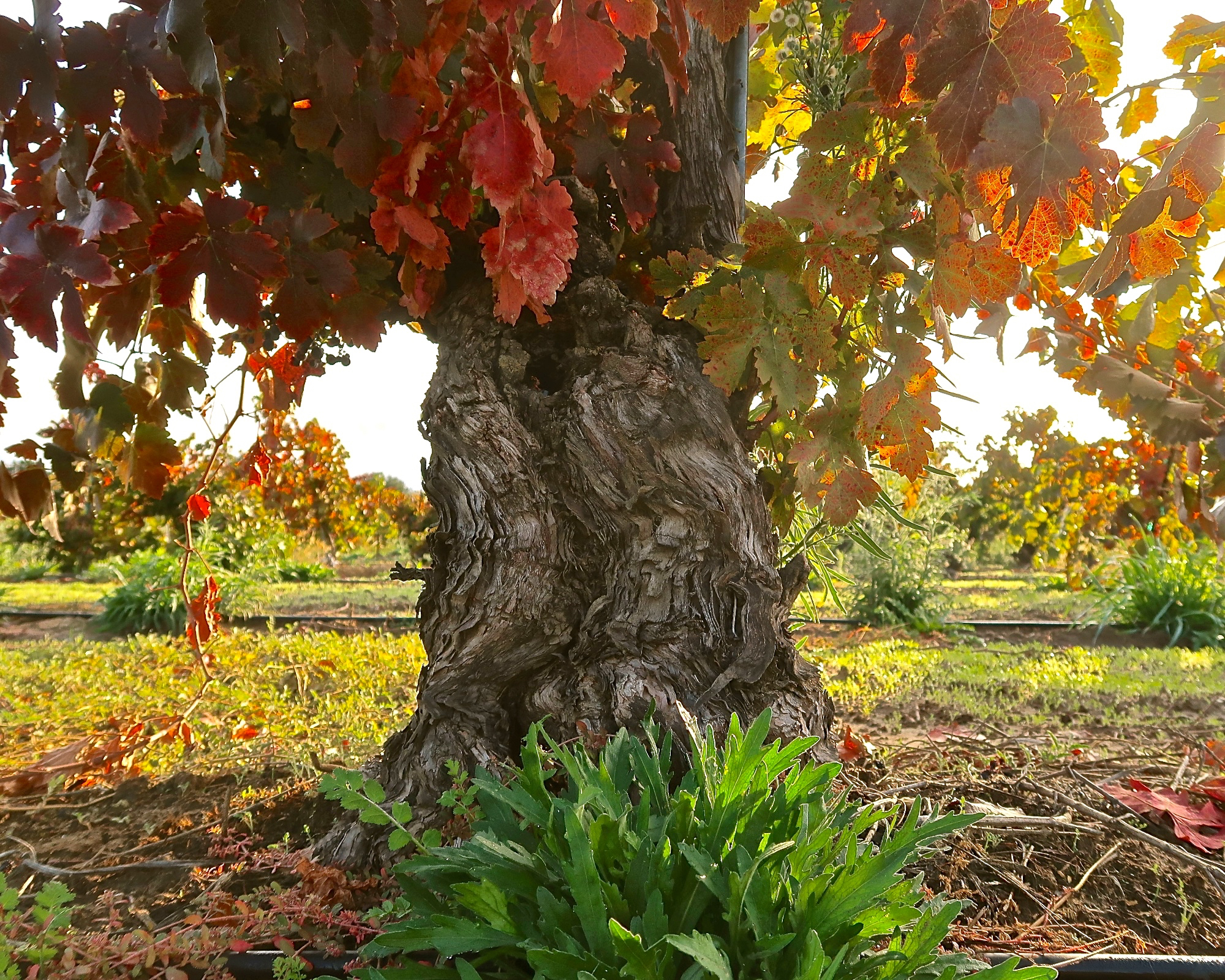
Ancient vine Carignan (planted in 1909) on the east side of Lodi's Mokelumne River AVA.
The cachet of old vines is that these are plants that have grown old enough—many HVS vineyards were first planted as long ago as the 1850s and early 1900s (hence, their "historic" significance)—to have developed deep rooting systems, and trunks, arms or spurs that are strong enough to draw a maximum amount of sap and nutrients from the ground. Therefore, it is no coincidence that vineyards that have thrived for over 50 years in one place also happen to sit on the best possible sites for grapevines.
This past year (2023), the world has also seen the emergence of a UK-based Old Vine Registry which, like Historic Vineyard Society, endeavors to recognize and preserve old vine growths (defined by OVR as vineyards over 30 years old), only on an international scale.
In France, where viticulture dates back to the Roman Empire (27 BC-AD 395), old vine wines are designated as Vielles Vignes. Winegrowing is just as old in Germany, but there are no designations for old vines on German wine labels. However, the finest German vineyards located along the banks of the Mosel and Rheingau rivers are known to have large proportions of grapevines over 50 or even 100 years old. In Spain, there is a prospective Vina Vieja organization that is just beginning to celebrate the prestige of old vines. In these countries, appreciation of old vines is considered a priori—it goes without saying that they can produce the finest wines.
In Australia, there is a Barossa Valley Old Vine Charter that recognizes old vines in four categories: "Old Vine" (at least 35 years old), "Survivor Vine" (70 years), Centenarian Vine (100 years), and " Ancestor Vine" (125 years). Very recently, South Africa has started its own Old Vine Project, dedicated to safeguarding vineyards over 35 years old like the national treasures they are.
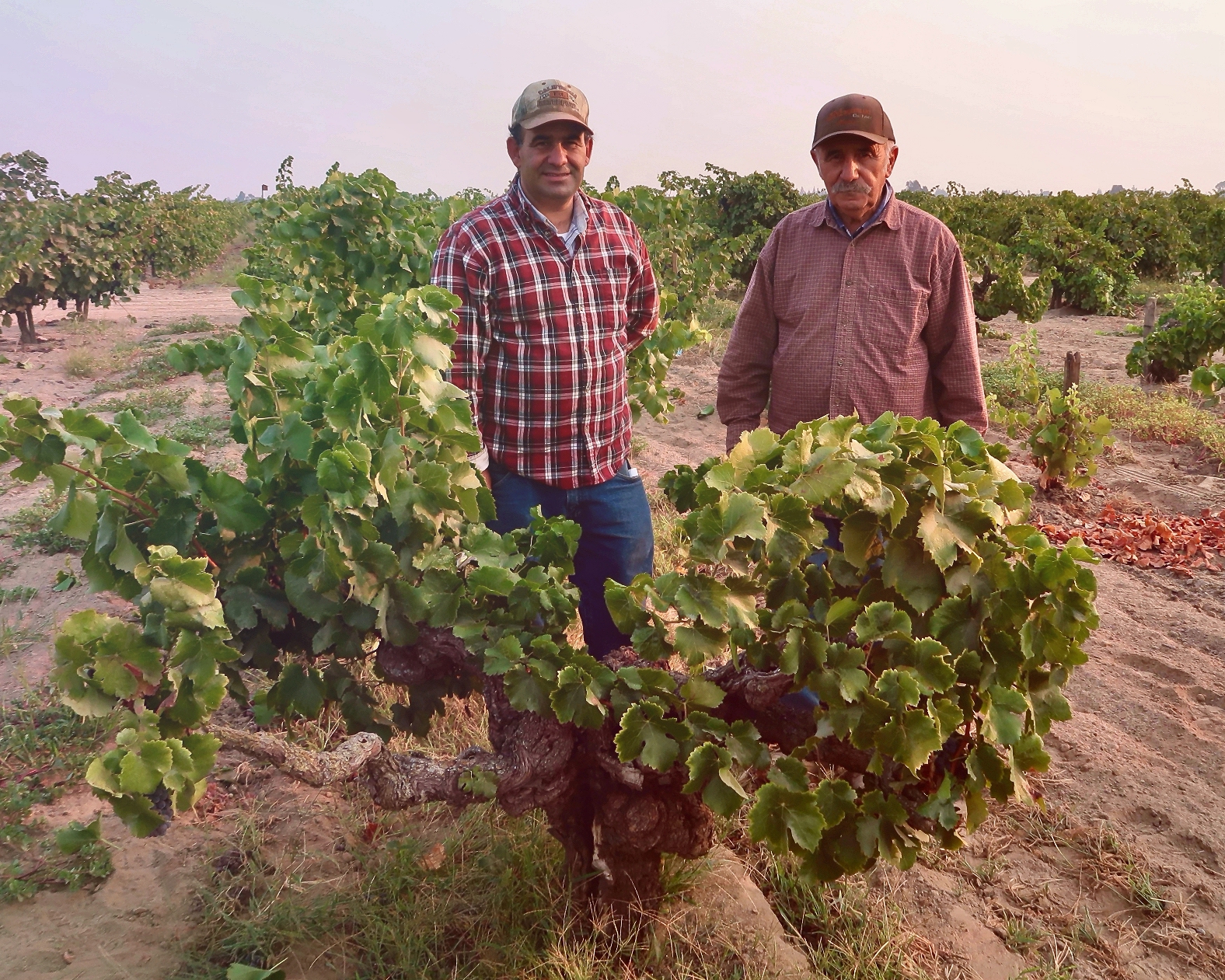
Greg and Leonard Manassero, third and fourth generation Lodi growers, with old vine Grenache (planted in the late 1930s).
Not surprisingly, the oldest vine plantings in both Old World and New World countries consist of grape varieties that are the most ideally suited to their respective environments. In Germany, it is Riesling; in France, grapes such as Chardonnay or Sauvignon blanc. In California Zinfandel was recognized as the most suitable cultivar for the state's Mediterranean climate as early as the 1850s. Therefore, most old vine vineyards in California are planted to Zinfandel, although there are other grapes of Mediterranean origin (such as Carignan, Cinsaut and Mourvèdre) found in California's historic vineyards.
Make no mistake, great wine can also be made from young vines. Napa Valley is considered California's most prestigious appellation, and the average age of Napa Valley vineyards—planted mostly to French grapes such as Cabernet Sauvignon, Chardonnay and Merlot—is under 20 years. Younger vines have a distinct advantage in terms of yields, and larger crop loads translates into higher profit. Wine in California, after all, is an $88 billion industry, and just as much a make-or-break business as any other.
Therefore, old vine plantings around the world will always be a distinct minority. They may produce wines of ideal quality, highly expressive of the terroir of their respective regions, but it takes a special dedication on the part of growers, wineries and producers to value a vineyard's quality, character and history as much as sheer profitability. Given a choice between cultivating highly profitable young vines or marginally profitable old vines, most of the wine industry obviously chooses profit.
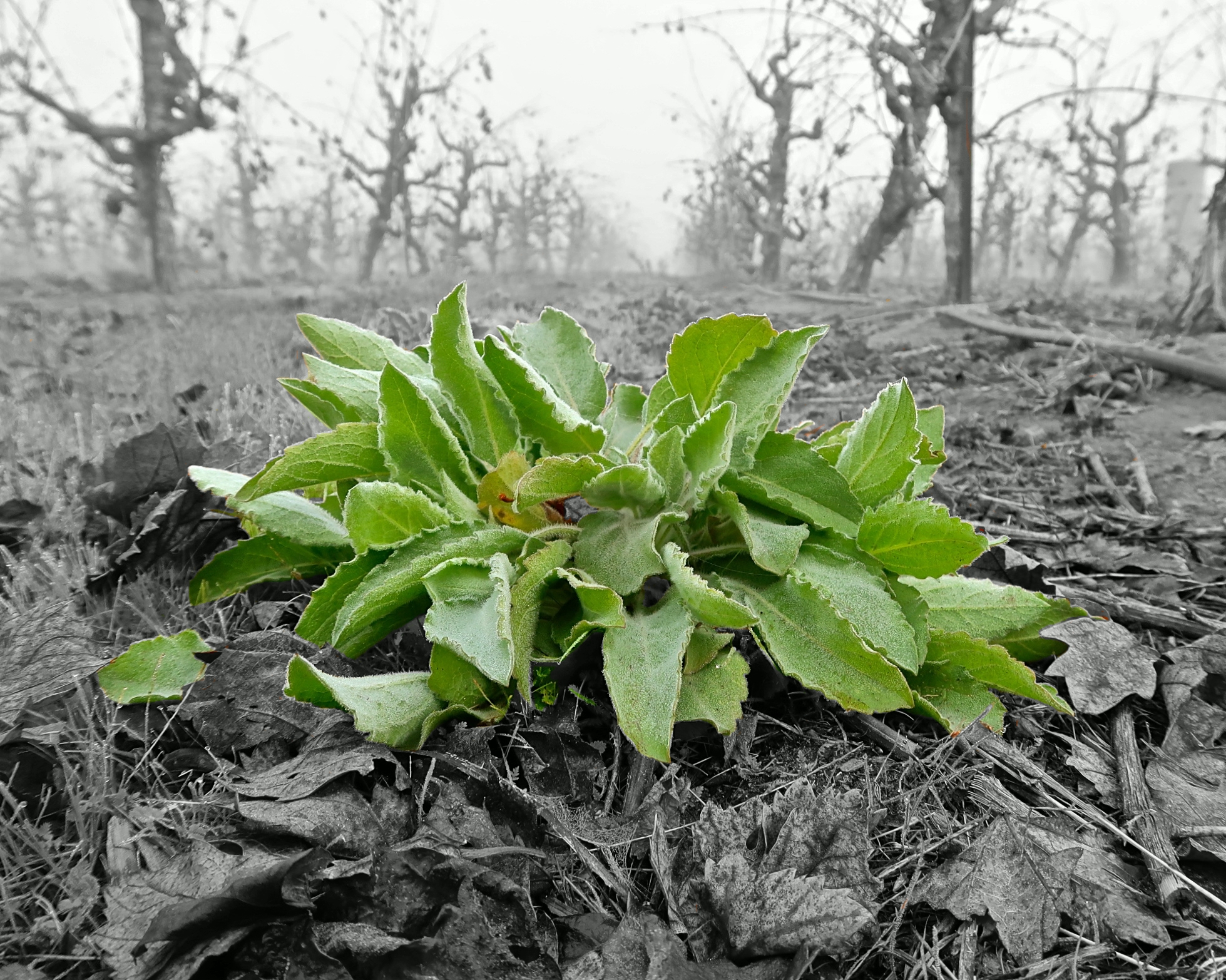
Winter mullein among old vines in the Mokelumne River-Lodi appellation.
Lodi growers, you might have also heard, have practically defined contemporary concepts associated with sustainability as it relates to viticulture. To a Lodi grower's mind, profitability and sustainability are one and the same. Without profit, you cannot live to plant another day; without sustainable practices, there is no profit. And to wine lovers the world over, the perceived value of bottlings in terms of sustainability, biodiversity, and preservation of the history of vineyards are more important than ever.
The more you know and appreciate wines, the more you care about their provenence as plants; and every day, consumers care more and more.
I have been making a living buying, selling, constantly thinking and writing about wine for over 45 years. I, too, take something of an sustainable attitude towards the profession. I feel that if I am not doing my part by publicly helping to define what it is about wine that should be real or significant to everyone, I might as well find another way to spend my time. Maybe something more relaxing, like lying on a beach in Hawaii.
I am not quite ready for those beaches. Not while wines from Lodi have yet to get their full due. Sure, they are alcoholic beverages like any other. They are also good enough to stimulate the intellect, a collective sense of history and aesthetics, and appeal to universal cravings for distinctive, often surprising, sensory experiences.
There is still so much more to talk about Lodi.
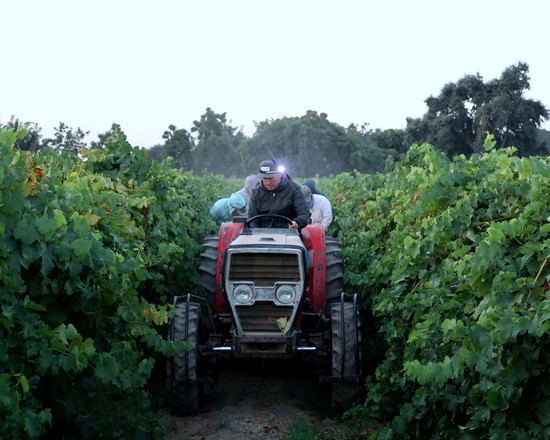
2023 Assyrtiko harvest in the Perlegos family's Clements Hills-Lodi vineyard.
